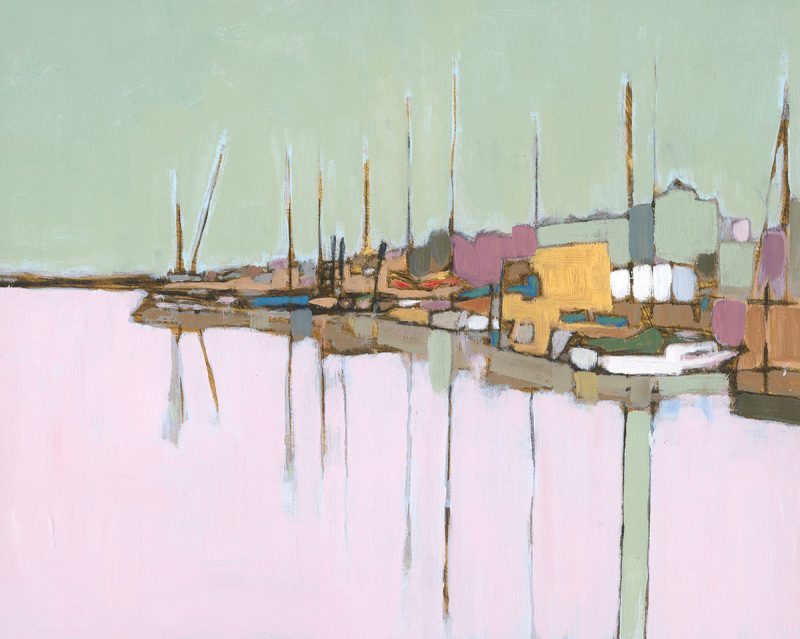
Oare Creek, Chris Blunkell
Colours have depth and vibrate in Chris Blunkell’s paintings because the creation of each painting is a battle. The artist says: ‘I have to wrestle my paintings to the floor. I don’t want to iron out all the conflict. Tension gives my paintings their energy.’

Chris Blunkell painting at the edge of the marsh and the sea
The conflict in Chris’s works comes from his efforts to resist his temptation to over-analyse the process of painting; what he paints, why he paints, how he paints. He says: ‘I try to respond to the composition. I feel it’s working when the painting starts to tell me what to do. Really, my pictures are about their own making. I don’t want to intellectualise my paintings. ‘
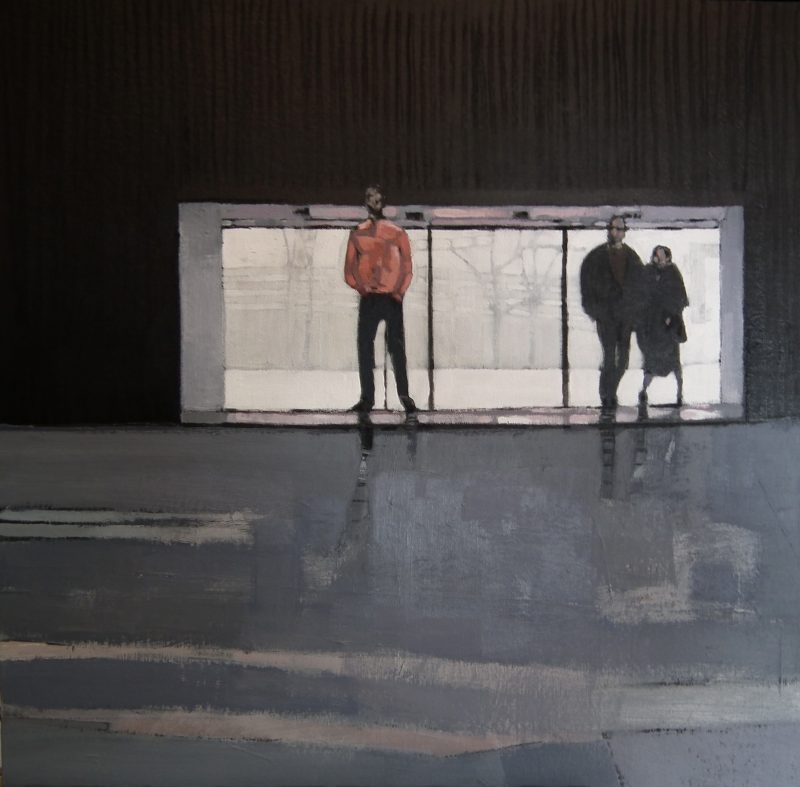
Entrance
Yet it was Chris’s background in academic writing and his immersion in his doctorate in Political Sociology that drew him to the easel. As he sank deeper into the ramifications of ‘coastal governance in the wider context of climate change’, the allure of paint colours, with names like Quinacridone Burnt Orange, Violet Iron Oxide, Naples Yellow and Permanent Sap Green, intensified. Painting was an escape from the ‘analytical stuff’, yet as he painted, Chris found it easier to solve academic problems. He had painted all his life in a desultory fashion but when a friend suggested he could sell his paintings, took a picture to another friend in a gallery in Whitstable who sold it, Chris changed tack.
Having gained his doctorate, he firmly closed his laptop, and purposefully took up his paintbrush.
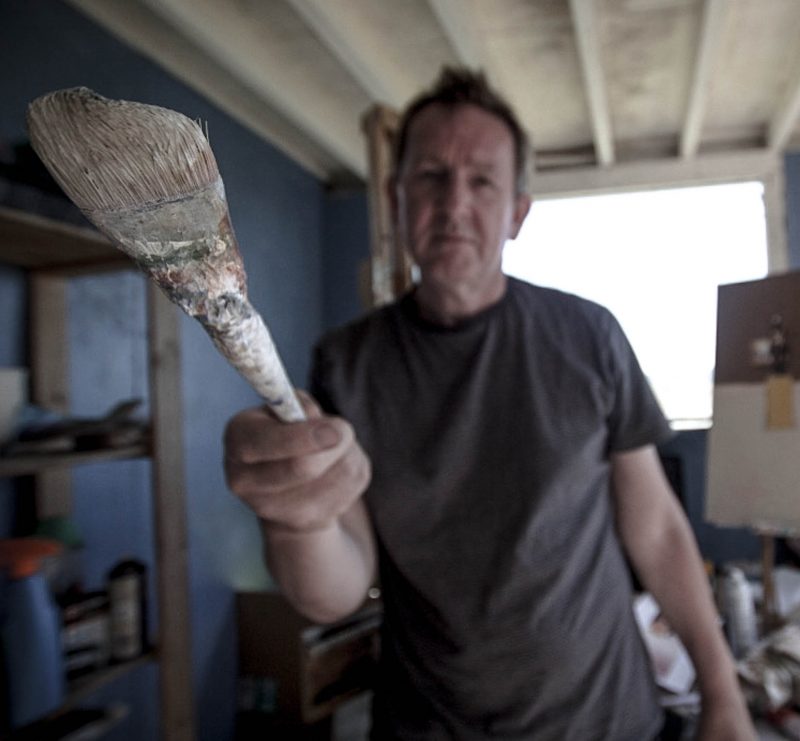
Chris Blunkell armed with a paintbrush
Chris paints people, landscapes and interiors using acrylics, ‘with the liberal use of charcoal for weight, depth and movement’. He paints people looking at paintings in galleries, Rothko paintings and his own paintings, and recently did a series of paintings of friends reading a book significant to them. It is no surprise that he is an admirer of David Hockney, Degas, Lucien Freud, Mark Rothko, Richard Diebenkorn and Edward Hopper. Chris is a regular visitor to California, where he paints buildings, landscapes and the extraordinary light, and exhibits at a friend’s double-fronted warehouse in Los Angeles’ South Central neighbourhood. Having recently returned from California, he is working on a series of paintings called Canyon from Highway 5.
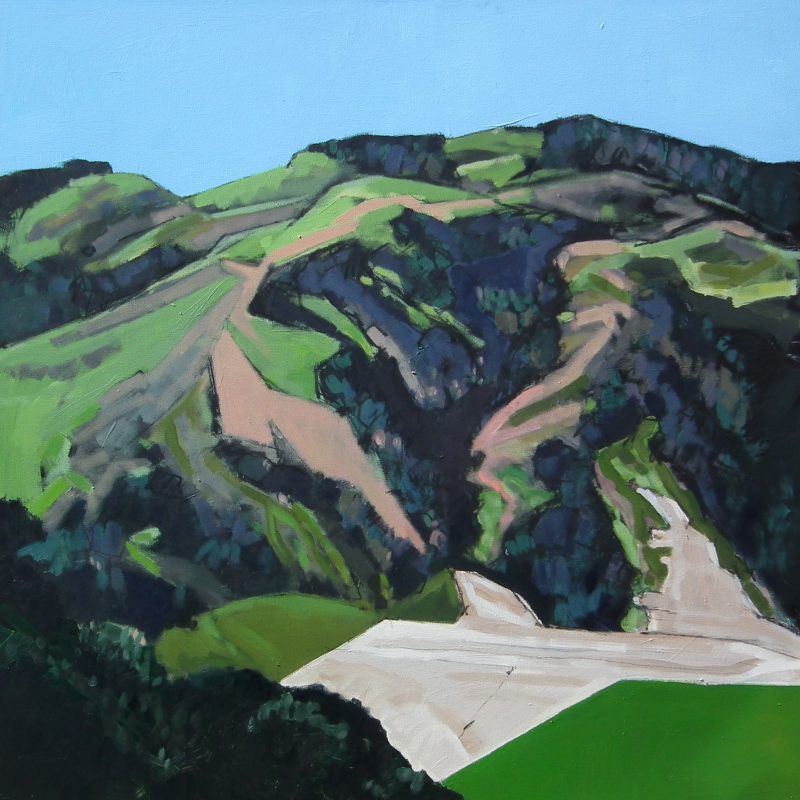
Canyon From Highway 5 II
For all his fighting talk, Chris’s move into exhibiting and selling his art both in the UK and the United States, has been relatively smooth. His paintings are now owned by collectors in the UK, continental Europe, The United States, the Caribbean and the Far East.
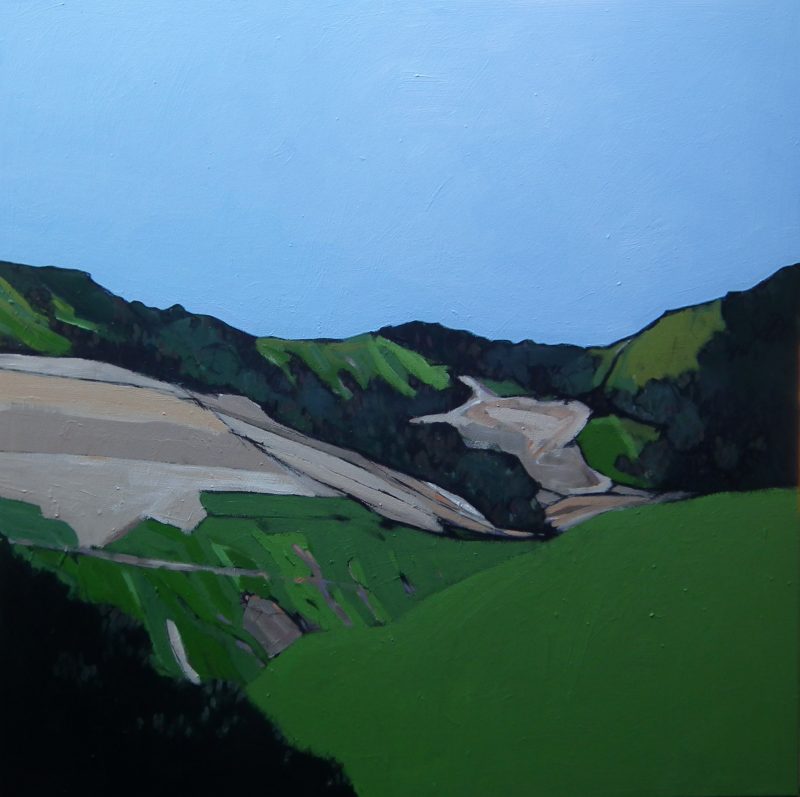
Canyon from Highway 5 III
Chris is of that number (like me) who has succumbed to the ineluctable lure of this corner of Kent. He went to school in Faversham, left to make his way in the wider world, and was irresistibly drawn back. He now lives on the edge of the marshes and the sea between Faversham and Whitstable. You may see him striding across the marshes, occasionally pleading for better behaviour from his two, sometimes recalcitrant but unfailingly charming, black greyhounds, Hunter and Hattie, retired racers.
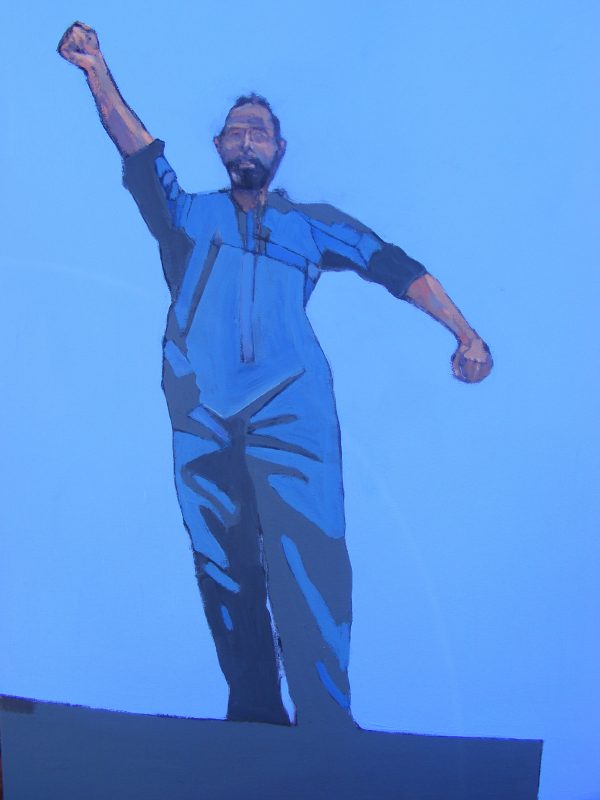
Reach for the Sky
If you make an appointment to view Chris’s work at his house – the long sitting room with wide windows at each end, streaming with North Sea light, is a natural gallery – Hunter will bring you a shoe when you arrive and gently lean against you as he modestly waits for you to appreciate the gesture.
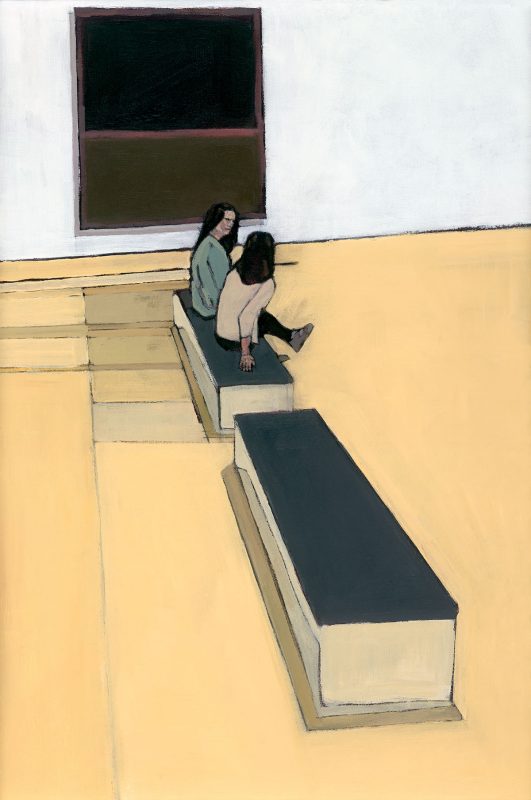
Conversation. Painting people looking at paintings
Exhibitions showing Chris’s work can be seen at Nucleus Arts Chatham Gallery from June 22nd and Linden Hall Studio in Deal in November. See Chris’s website for details of these and other exhibitions.
Text: Posy. Photographs: Nick Cordès